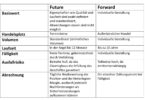As workplaces become increasingly diverse, organizations are seeking ways to embrace heterogeneity and create more inclusive climates. By embracing employees from different backgrounds, companies are reaping the benefits of increased productivity, creativity, and satisfaction. This article seeks to explore how organizations can create greater harmony in their workforce and enrich the work experience through diversity and inclusion.
1. Overview of Diversity & समावेश
With the right cornucopia of individuals, teams, organizations, and companies thrive and stay sharp. Diversity & समावेश, often abbreviated as D&I, is the practice of promoting an open workplace and environment for all individuals and different backgrounds. Whether it is on the race, gender, age, sexual orientation, or mental capabilities, workplace D&I fosters a feeling of abundance, acceptance, and growth.
Benefits of Promoting D&I
- Increased Innovation & Creativity – Viewpoint diversity allows teams to be open to innovations and ideas that may have been overlooked previously.
- Enhanced Collaboration – Workplace D&I opens communication channels and makes teamwork more organic and productive.
- Diverse Perspectives – A combined plethora of perspectives that come from people of different backgrounds drives better scenarios for success.
- Higher Employee Retention - A sense of inclusion and belonging among employees also speaks to building loyalty.
Challenges of Promoting D&I
- Unconscious Bias - Social biases exists, and sometimes, it’s unconscious. This can lead to an uneven playing field.
- Shifting and Stereotyping – Emphasis on increasing diversity and equal representation sometimes leads to shifting, stereotyping people, and excluding those not belonging to the “category”.
- Limiting Comfort Zones – Workplace D&I encourages individuals to come out of their comfort zone, which may not always be accepted everywhere.
Creating a work climate that promotes diversity and inclusion celebrates the uniqueness of everyone and encourages them to be free to work together and reach optimal success. The only way to do this is by promoting the values of acceptance and compassion within the workforce. By doing so, every individual can bring their unique approaches to create an environment that celebrates differences while also harmonizing together for a shared goal.
2. Benefits of a Diverse Workforce
As the world has become a global village, teams in today’s workplaces are increasingly varied. With people of different backgrounds and perspectives now working together, organizations around the globe are exploring the benefits of having a diverse workforce.
- Enhanced creativity – Diversity encourages creative thinking, progress, and innovation. Different outlooks and a wide range of people with world knowledge brings with it an array of possibilities that are unprecedented.
- Greater problem-solving capabilities – A diverse range of people recruited with various skill sets helps to tackle complex challenges and offer solutions that could rarely be achieved from one perspective.
- Increased motivation – Diverse workforces enjoy improved morale and a renewed commitment to meeting organizational goals. This is because inclusion helps individuals from disparate backgrounds feel genuinely valued.
The inclusivity of a diverse workforce also produces an enhanced corporate culture, further cementing the positive aspects of having a vibrant and heterogeneous group of employees. This sense of belonging can often lead to better and more productive work, with an improved customer experience.
At the heart of embracing a diverse and inclusive workforce is to recognize that everybody should be respected for who they are. By promoting an open and comfortable environment, employees of varying ages, backgrounds, and perspectives can all collaborate and thrive together.
3. Challenges of Promoting Diversity & Inclusion
As businesses become increasingly competitive, embracing diversity and inclusion (D&I) in the workplace is no longer optional; it is integral for achieving success. तथापि, promoting and fostering a positive environment for employees of all backgrounds is no easy task. To facilitate harmony in heterogeneity, here are three key challenges to consider when developing a D&I strategy:
- Creating a Sense of Belonging: It is important for all employees to feel a sense of inclusion in the workplace. Ensuring that everyone is respected and valued is essential for building an environment of acceptance and understanding.
- Encouraging a Culture of Inclusivity: Organizations with a diverse workforce need to adopt a culture that embraces and celebrates differences. This involves allowing open discussion while creating a safe space where all opinions can be heard.
- Eliminating Unconscious Bias: While the aim is to welcome everyone’s contributions, there can be a tendency to favour certain individuals or groups. As part of an effective D&I strategy, leaders must become aware of their own biases and work to ensure that everyone has equal opportunities.
It is essential for businesses to address these challenges to truly benefit from the potential offered by a diverse and inclusive workforce. Taking proactive steps to create a supportive culture will lead to stronger teams and a more effective and productive organization.
4. Strategies to Create a Harmonious Work Environment
Construct an Inclusive Culture:
Enclosing a diverse and inclusive culture in the workplace is the key to creating a harmonious work environment. For this, employees should be given equal opportunities for growth and development. Training workshops should be held to inform them about the importance of inclusion and diversity. All employees should be encouraged to be open-minded while listening to the thoughts and opinions of others, regardless of their differences.
Create a Flexible Work Schedule:
An ideal work environment follows a flexible work schedule. This should give room for the employees to work and socialize on their own terms while maintaining a healthy balance between their personal and professional lives. This allows employees to understand each other better and work collaboratively.
Respect One Another:
Respect is the cornerstone of a conducive workplace. As an employer, lead by example and encourage staff to do the same. This helps in considering different working styles, incorporating different perspectives and valuing the ideas generated by the collective group.
Celebrate Difference:
It is important to celebrate and recognize the difference between individuals and groups. Special events should be organized to recognize the different cultures and backgrounds of employees. This creates a sense of camaraderie and unity among colleagues. इसके अतिरिक्त, office policies should be adjusted to accommodate everyone and their respective styles or preferences.
5. Motivating Employees to Embrace Diversity & समावेश
In an era where global and local workforce diversity and culture is no longer a luxury for many work organizations, but a necessity for sustainability and success, the need to maximize the advantages of this heterogeneity, without neglecting the individual talents of each employee is of paramount importance.
1. Celebrate Individuality And Uniqueness: Celebrate the individuality and uniqueness of each and every employee that make up the workforce. Encourage them to bring their entire selves to work, so as to build a strong and diverse team. By valuing each employee’s strengths and differences, a feeling of understanding and cohesion emerges among staff and can be taken advantage of to create something truly unique.
2. Foster Cooperation And Tolerance: Deepen a shared understanding in the workplace by integrating activities and events that foster cooperation and tolerance. Not only will it show employees that their efforts in driving inclusivity are valued, but it will also create a safe environment for expressing new ideas and personal experiences.
3. Promote Open Communication: Ensure that conversations and discussions taking place in the workplace are free of judgement and not intimidating. Promote an open, candid and empathetic communication between employees, by establishing approaches and policies tailor-made to break down traditional hierarchies and discourage siloing.
4. Leverage Technology: To keep up with the ever-changing workplace diversity, many companies are leveraging technology and software to track their diversity initiatives and goals. By utilizing these technologies, companies can effectively measure progress, analyze employee data, and precisely identify areas needing improvement or enhancement.
5. Share Success Stories: To be successful, everybody wants to feel appreciated and it’s the same for diverse teams. Celebrate success stories and share them with the entire workforce. This will help promote a sense of pride amongst the team members and create a positive working atmosphere.
6. Enhancing Your Recruiting Efforts
Length: 300 words.
In today’s highly competitive workforce, diversity and inclusion have become the norm. Organizations are realizing the benefits of employing a variety of unique skills and perspectives, enabling them to stand out from the competition.
Recruiting a diverse and inclusive workforce helps organizations create a dynamic and innovative workplace, which in turn enhances the overall success of the organization. By embracing differences, organizations are also able to broaden their outreach and recruitment efforts to a wider group of applicants with different backgrounds, experiences, and talents.
Here are six tips to help you strengthen your recruiting efforts:
- Identify skills gaps and ensure recruitment processes are recruiting diverse and qualified candidates,
- Partner with organizations that are dedicated to increasing diversity in the workforce,
- Advertise job vacancies in venues that attract a diverse population,
- Develop a culture of inclusivity and embrace diversity,
- Adequately train HR staff on the importance of diversity and inclusion and ensure their practices are fair and unbiased,
- Encourage open dialogue and peer-to-peer learning amongst new hires from different backgrounds.
By creating a workplace where individuals feel comfortable to be their authentic selves, organizations can build an environment that values creativity, collaboration, and innovation. Establishing this level of harmony in heterogeneity encourages loyalty, and employees tend to remain with the company for longer. Enriching the workforce with individuals from different backgrounds and experiences only brings value and strengthens the organization’s competitive edge. With clear and effective policies promoting diversity and inclusion, your organization has the potential to unlock its true potential.
7. Implementing Comprehensive Change
As any meaningful transformation requires a disparate set of skills, attitudes, beliefs, and backgrounds to be successful, it is essential to champion diversity and inclusion in order for teams to realize their desired outcomes. Without recognizing the strengths each individual brings to the table, a comprehensive change, particularly one involving organizational processes, will not be successful.
- Workplace culture: Establishing a culture of inclusivity and understanding starts at the top. Corporate policies, management practices, and employee resource groups should be developed to ensure that no individual is excluded from participating in a diverse and vibrant workplace.
- Hiring initiatives: Diverse work teams are essential for getting the job done, but they can only be realized with proper recruitment. Companies must prioritize diversity initiatives and create pathways for people from various backgrounds to enter or re-enter the workforce.
- Training and development: Training and development opportunities should be offered and encouraged at a company-wide level. These initiatives should focus on teaching skills, promoting cultural sensitivity, and providing resources to help address any disparities in employment.
Including diversity and inclusion in comprehensive change strategies should not be seen as a necessity, but rather an advantageous measure taken to ensure that all team members are able to contribute their experience and point of view. With the right tools, team members can work together in harmony, unified by their shared experience and purpose.
No matter the size or type of organization, it is clear that embracing diversity and fostering a sense of inclusivity in the workplace is key to creating a richer, more harmonious working environment. Through embracing heterogeneity, we can celebrate our differences and find a way to prosper and grow together.








